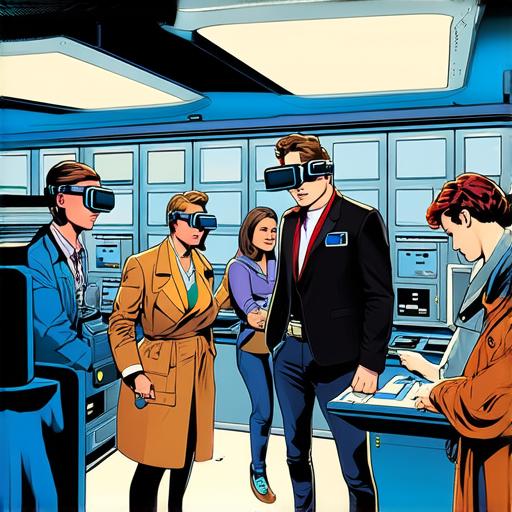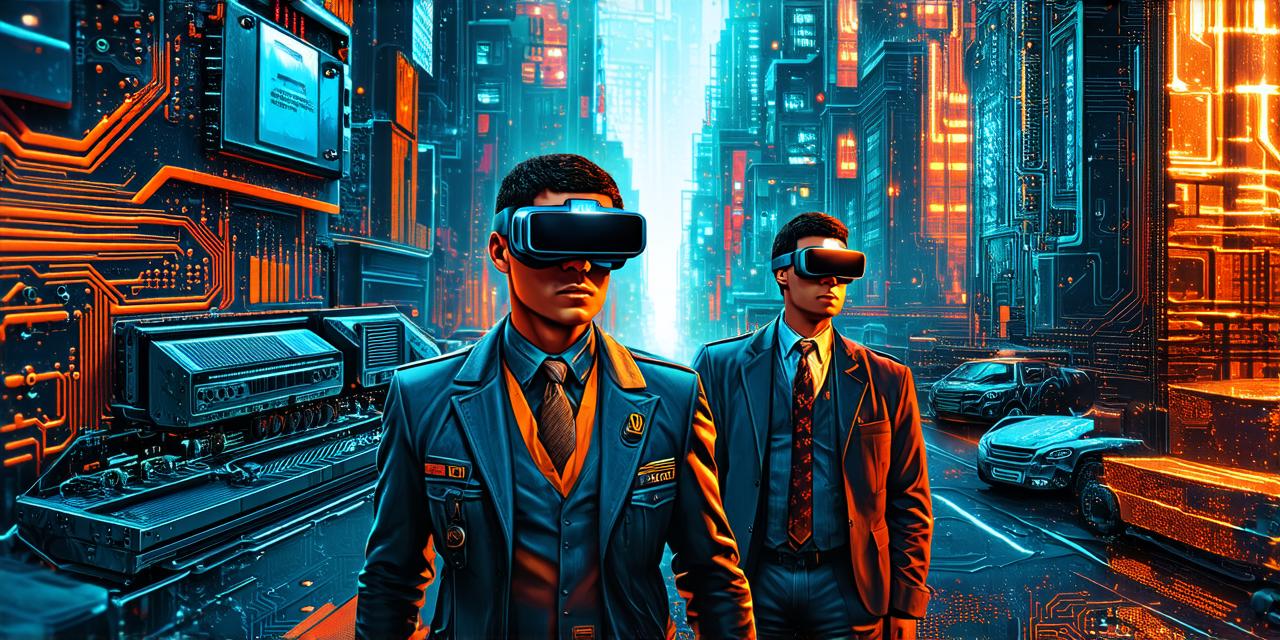The Early Days of Virtual Reality Glasses
In 1968, computer scientist Ivan Sutherland created a device called the “Sword of Damocles” which was one of the first virtual reality headsets. The device consisted of a head-mounted display with wires hanging down from it, resembling a sword in Greek mythology. Despite its crude appearance, the Sword of Damocles laid the foundation for modern VR technology.
The Next Generation of Virtual Reality Glasses
In 2010, Palmer Luckey and his team at Oculus VR launched the first commercial virtual reality headset, the Oculus Rift. The Rift was a significant improvement over its predecessors, featuring high-resolution displays and a wider field of view. It also introduced hand tracking technology, which allowed users to interact with virtual environments using their hands.
The Future of Virtual Reality Glasses
Virtual reality glasses are constantly evolving, and the future looks bright for this technology. One of the most exciting developments in VR is the integration of artificial intelligence (AI) and machine learning (ML) into virtual environments. This allows for more realistic and dynamic virtual experiences that can adapt to the user’s preferences and behaviors.
Case Studies and Personal Experiences
One of the most compelling examples of the impact of virtual reality glasses is the use of VR in healthcare. Virtual reality has been used to simulate surgical procedures, allowing doctors to practice and improve their skills in a safe and controlled environment. In addition, virtual reality therapy has been shown to be effective in treating conditions such as anxiety, depression, and post-traumatic stress disorder (PTSD).
Expert Opinions
According to Palmer Luckey, the founder of Oculus VR, “Virtual reality has the potential to change the way we live, work, and interact with each other. It’s an exciting time to be involved in this technology.”
Similarly, Dr. Michael Snyder, a professor of computer science at the University of California, Irvine, believes that virtual reality will become a ubiquitous part of our daily lives. “Virtual reality is already changing the way we experience the world, and it’s only going to get better,” he says.
Real-Life Examples
One of the most inspiring examples of virtual reality technology in action is the use of VR in space exploration. NASA has used virtual reality simulations to train astronauts for missions to the International Space Station (ISS) and beyond. These simulations provide a realistic environment that replicates the challenges and complexities of space travel, allowing astronauts to practice their skills and prepare for real-world scenarios.
Thought-Provoking Ending
Virtual reality glasses have come a long way since their inception, and the future looks bright for this technology. From healthcare to education and beyond, virtual reality has the potential to transform the way we live, work, and interact with each other. As we continue to push the boundaries of VR technology, who knows what new and exciting possibilities await us in the world of virtual reality glasses.

FAQs
1. What was the first virtual reality headset?
The first virtual reality headset was the “Sword of Damocles,” created by Ivan Sutherland in 1968.
2. When was the first commercial virtual reality headset launched?
The first commercial virtual reality headset, the Oculus Rift, was launched by Oculus VR in 2010.
3. What are some of the current advancements in virtual reality technology?
Some of the current advancements in virtual reality technology include the integration of artificial intelligence and machine learning into virtual environments, wireless VR headsets, and advancements in haptic technology.
4. How is virtual reality being used in healthcare?
Virtual reality is being used in healthcare to simulate surgical procedures, allow doctors to practice and improve their skills in a safe and controlled environment, and provide immersive therapy for conditions such as anxiety, depression, and PTSD.
5. What are some real-life examples of virtual reality technology in action?
Some real-life examples of virtual reality technology in action include the use of VR in space exploration, virtual reality simulations for training astronauts, and the use of VR in architecture to create immersive 3D models of buildings and environments.
